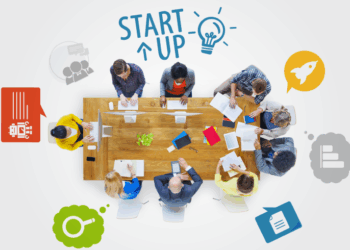In an era of unprecedented global challenges and relentless technological advancement, a transformative force is rapidly reshaping industries, driving social progress, and redefining leadership: Next-Gen Innovators. These are not just young people with bright ideas; they are a dynamic cohort of visionaries who possess a unique blend of digital fluency, a deep-seated commitment to purpose, and an innate ability to challenge the status quo. They are leveraging cutting-edge technologies, fostering collaborative ecosystems, and demanding solutions that prioritize both profit and positive impact. This comprehensive article delves into the multifaceted phenomenon of next-generation innovation, exploring the core attributes that define these trailblazers, the unparalleled advantages they leverage, the significant hurdles they navigate, and the profound influence they are exerting across diverse sectors globally. Understanding and actively nurturing this wave of innovation is paramount for any organization, government, or individual invested in securing a resilient, equitable, and prosperous future.
The Crucible of Next-Gen Innovators

The emergence of this powerful new generation of innovators is a direct consequence of a unique blend of environmental, technological, and societal shifts that have created fertile ground for their disruptive spirit.
A. Digital Native Expertise: This generation has grown up entirely immersed in a digital world. They are not merely users of technology but intuitively understand its capabilities and limitations. This includes:
1. Algorithmic Literacy: They grasp how algorithms shape information flow and consumer behavior, enabling them to optimize for digital platforms.
2. Cloud-Native Thinking: They inherently understand the scalability and flexibility offered by cloud computing, allowing them to build global solutions from inception.
3. Data Fluency: They are comfortable with data collection, analysis, and leveraging insights to inform decision-making, personalization, and continuous improvement.
4. AI Integration: They quickly identify opportunities to integrate artificial intelligence and machine learning into processes, products, and services for enhanced efficiency and intelligence.
B. Global Connectivity and Collaboration: The internet has dissolved geographical barriers, enabling these innovators to:
1. Access Diverse Perspectives: Connect with peers, mentors, and experts from around the world, fostering cross-cultural understanding and diverse problem-solving approaches.
2. Crowdsource Ideas and Solutions: Leverage global networks for feedback, talent acquisition, and even funding (e.g., crowdfunding).
3. Build Decentralized Teams: Collaborate effectively with remote teams across different time zones, leveraging digital communication and project management tools.
C. Confronting Grand Challenges: Having inherited a world grappling with climate change, social inequality, and economic instability, next-gen innovators feel a profound sense of urgency and responsibility. This often translates into:
1. Purpose-Driven Innovation: Their ventures are frequently rooted in a desire to solve systemic problems and create positive societal impact, not solely driven by profit.
2. Ethical Considerations: They are more likely to integrate ethical AI, sustainable practices, and inclusive design principles into their innovations from the outset.
3. Demand for Accountability: They challenge existing institutions and demand transparency and accountability in tackling global issues.
D. Educational Evolution: Modern education, particularly in forward-thinking institutions, increasingly emphasizes:
1. Interdisciplinary Learning: Encouraging students to combine knowledge from various fields (e.g., engineering and sociology) to foster holistic problem-solving.
2. Project-Based Learning: Providing hands-on opportunities to develop real-world solutions, often through hackathons, incubators, and startup competitions.
3. Entrepreneurial Mindset Cultivation: Teaching skills like critical thinking, resilience, adaptability, and an iterative approach to problem-solving.
E. Access to Entrepreneurial Ecosystems: The proliferation of accelerators, incubators, co-working spaces, and angel investor networks has significantly lowered the barriers to entry for launching new ventures. These ecosystems provide crucial mentorship, resources, and funding.
The Hallmarks of Next-Gen Innovators
Beyond their foundational experiences, next-gen innovators share a set of distinctive qualities that empower them to lead the charge in a rapidly changing world.
A. Radical Problem-Solving and Disruptive Thinking:
1. Unburdened by Legacy: They are less constrained by established industry norms or traditional ways of doing things, allowing them to envision entirely new solutions.
2. First Principles Thinking: They often break down problems to their fundamental truths, rather than relying on analogies or existing frameworks, leading to truly novel approaches.
3. Comfort with Ambiguity: They thrive in uncertain environments, viewing complexity as an opportunity for innovation rather than a deterrent.
B. Purpose-Driven and Values-Aligned Leadership:
1. Impact-Oriented: Their primary motivation often extends beyond financial gain to include creating positive social, environmental, or cultural impact.
2. Authenticity: They lead with transparency and genuine conviction, which resonates deeply with increasingly values-conscious consumers and employees.
3. Ethical Design: They prioritize building products and systems that are fair, inclusive, and responsible, considering the broader societal implications of their innovations.
C. Hyper-Agility and Iterative Mindset:
1. Lean Startup Principles: They embrace rapid prototyping, Minimum Viable Products (MVPs), and continuous feedback loops to validate ideas quickly and efficiently.
2. Adaptability: They are exceptionally quick to pivot strategies, technologies, or business models in response to market feedback, new data, or emerging trends.
3. Embrace Failure as Learning: They view setbacks as valuable learning opportunities, fostering a culture of experimentation and resilience.
D. Collaboration and Community-Centricity:
1. Open Innovation: They are often keen to collaborate across disciplines, industries, and even with competitors to find synergistic solutions.
2. Community Building: They excel at building loyal online communities around their products, services, or causes, leveraging these communities for feedback, advocacy, and growth.
3. Empowerment: They seek to empower others, often designing solutions that enable users or communities to create value themselves.
E. Global Outlook and Cultural Intelligence:
1. Borderless Thinking: Their ideas and markets are often global from inception, leveraging the internet to transcend geographical limitations.
2. Cross-Cultural Empathy: They are more attuned to diverse cultural nuances, enabling them to design universally appealing products or navigate international markets effectively.
3. Sustainable Global Solutions: They often focus on solutions that address global challenges like poverty, disease, or climate change, recognizing interconnectedness.
Challenges for Next-Gen Innovators

Despite their formidable strengths, next-gen innovators face unique obstacles that require strategic foresight and unwavering resilience.
A. Securing Capital and Proving Longevity: While seed funding is more accessible, securing substantial later-stage investment can be challenging, particularly for projects with longer R&D cycles or those focused purely on social impact without clear revenue models. Proving long-term viability without extensive traditional experience can be a hurdle.
- Strategic Funding Pathways:
- Impact Investing: Target investors specifically looking for ventures with both financial returns and positive social/environmental impact.
- Grant Funding: Pursue non-dilutive grants from foundations, government programs, or NGOs supporting innovation in specific areas.
- Crowdfunding: Leverage platforms to raise capital from a broad base of supporters, validating market demand simultaneously.
- Venture Philanthropy: Explore hybrid models that blend philanthropic funding with venture capital principles for mission-driven projects.
- Strategic Partnerships: Collaborate with established corporations that can provide funding, resources, or market access in exchange for equity or joint ventures.
B. Battling for Credibility and Overcoming Skepticism: Older, more established industries or traditional investors might sometimes dismiss young innovators due to their age, perceiving them as lacking the necessary experience, networks, or gravitas.
- Building and Demonstrating Credibility:
- Showcase Tangible Results: Focus on measurable outcomes, pilot project successes, and early user adoption to prove impact.
- Build a Diverse Advisory Board: Recruit experienced mentors and industry veterans who can offer guidance and lend their credibility to your venture.
- Clear Communication of Expertise: Articulate your unique insights and deep understanding of the problem space, demonstrating your specialized knowledge.
- Professional Presentation: Maintain high standards in all external communications, pitch decks, and online presence.
C. Intellectual Property Protection in a Fast-Paced World: In rapidly evolving technological fields, protecting proprietary ideas, algorithms, and designs from replication or infringement can be a complex and costly endeavor.
- Robust IP Strategy:
- Early Legal Counsel: Consult intellectual property lawyers early to understand patents, copyrights, trademarks, and trade secrets relevant to your innovation.
- Strategic Filing: Prioritize filing for patents or trademarks in key markets where your innovation holds the most value.
- Non-Disclosure Agreements (NDAs): Utilize NDAs with partners, employees, and potential investors when sharing sensitive information.
- Continuous Monitoring: Implement systems to monitor for potential infringement and be prepared to take action.
D. Navigating Complex Regulatory and Ethical Landscapes: Innovations in areas like AI, biotechnology, or data privacy often enter grey areas of regulation and raise significant ethical concerns that require careful navigation.
- Ethical and Regulatory Compliance:
- Proactive Engagement with Regulators: Seek to understand and engage with relevant regulatory bodies as your innovation develops.
- Integrate Ethical Frameworks: Embed ethical considerations and responsible AI principles into the design and deployment of your technology from the outset.
- Legal Expertise: Retain legal counsel specializing in relevant regulatory fields (e.g., health tech, fintech, data privacy).
- Public Dialogue: Be prepared to engage in public discourse about the societal implications of your innovation.
E. Burnout and Mental Well-being: The intense pressure, relentless pace, and high stakes of innovation can lead to severe stress, anxiety, and burnout, particularly for founders juggling multiple responsibilities.
- Prioritizing Well-being:
- Set Clear Boundaries: Establish defined work hours and dedicate time to rest, hobbies, and personal relationships.
- Delegate and Build a Team: Learn to empower others and distribute workload to prevent individual overload.
- Seek Support: Connect with peer networks, mentors, or mental health professionals to share burdens and gain perspective.
- Practice Self-Care: Integrate mindfulness, exercise, and healthy habits into your routine to manage stress.
Where Next-Gen Innovators Lead
Next-gen innovators are not confined to a single sector; their impact is felt across virtually every industry, fundamentally reshaping the way we live, work, and interact.
A. Sustainable Solutions and Climate Tech:
1. Renewable Energy Innovations: Developing more efficient solar panels, advanced battery storage, and smart grid solutions.
2. Circular Economy Ventures: Creating businesses focused on waste reduction, upcycling materials, and extending product lifecycles through repair or reuse models.
3. Carbon Capture Technology: Pioneering new methods for removing carbon dioxide from the atmosphere or reducing industrial emissions.
4. Sustainable Agriculture: Innovating in vertical farming, precision agriculture, and plant-based food alternatives to reduce environmental footprint.
B. AI and Automation Across Industries:
1. Healthcare Diagnostics: Developing AI tools for earlier and more accurate disease detection (e.g., from medical imaging).
2. Personalized Education: Creating AI-driven adaptive learning platforms that tailor content to individual student needs and learning styles.
3. Customer Service Automation: Building AI-powered chatbots and virtual assistants to enhance customer support and efficiency.
4. Logistics Optimization: Implementing AI and robotics to streamline supply chains, optimize delivery routes, and automate warehouse operations.
C. Digital Health and Wellness:
1. Mental Health Tech: Developing apps and platforms that provide accessible mental health support, therapy, and mindfulness tools.
2. Personalized Medicine: Leveraging genomics and AI to create tailored treatment plans and preventative health strategies.
3. Remote Patient Monitoring: Designing wearables and connected devices that allow healthcare providers to monitor patients remotely.
D. Fintech and Decentralized Finance (DeFi):
1. Blockchain-Based Solutions: Creating secure, transparent financial systems for payments, lending, and asset management.
2. Embedded Finance: Integrating financial services directly into non-financial platforms (e.g., buying insurance within a car rental app).
3. Financial Inclusion Tools: Developing mobile banking apps and micro-lending platforms that serve underserved populations.
E. Metaverse and Immersive Experiences:
1. Virtual Reality (VR) Training: Developing immersive training simulations for complex industries (e.g., healthcare, aviation).
2. Augmented Reality (AR) Commerce: Creating AR shopping experiences where consumers can virtually try on clothes or place furniture in their homes.
3. Digital Asset Creation: Innovating in NFTs, digital fashion, and virtual economies within metaverse platforms.
F. Social Impact and Community Building:
1. Civic Tech: Building platforms that enhance civic engagement, transparency in governance, or facilitate community action.
2. Crisis Response Tech: Developing innovative solutions for disaster relief, humanitarian aid distribution, or public health emergencies.
3. Inclusive Design: Focusing on creating technologies and products that are accessible and beneficial to diverse populations, including those with disabilities.
The Broader Influence for the Global Landscape
The impact of next-gen innovators extends far beyond their individual ventures, creating ripple effects that fundamentally reshape industries, economies, and societal structures.
A. Accelerating Digital Transformation Across Industries: Their pioneering efforts force traditional businesses to embrace digital technologies and agile methodologies, driving widespread modernization.
B. Shifting Economic Power Dynamics: The rise of nimble, tech-driven startups challenges established incumbents, leading to market disruption and a redistribution of economic power towards innovative new players.
C. Global Competitiveness and Innovation Hubs: Next-gen innovators often think globally, fostering international competition and contributing to the emergence of new innovation hubs beyond traditional Silicon Valley models.
D. Redefining the Future of Work: Their preference for flexible work models, purpose-driven roles, and continuous learning influences corporate cultures, pushing for more dynamic and employee-centric workplaces.
E. Driving Ethical and Sustainable Business Practices: Their inherent focus on impact and values compels businesses across the spectrum to adopt more responsible, transparent, and environmentally conscious practices to attract both talent and consumers.
F. Democratizing Access to Solutions: By leveraging scalable technologies, next-gen innovators can create solutions that are more accessible and affordable, benefiting a wider segment of the global population, particularly in developing regions.
G. New Skill Demands and Education Focus: The nature of their innovations drives demand for new skill sets (e.g., data ethics, AI development, sustainable design), influencing educational curricula and workforce development programs worldwide.
Fostering the Next Wave
To ensure a continuous flow of transformative innovation, it is essential to cultivate an environment that nurtures and empowers next-gen innovators.
A. Early-Stage Education in STEM and Entrepreneurship:
1. Integrated Curricula: Incorporate critical thinking, computational literacy, and problem-solving into education from an early age.
2. Hands-on Learning: Emphasize project-based learning, hackathons, and design challenges to foster practical skills and an iterative mindset.
3. Mentorship from Practitioners: Connect students with active entrepreneurs and technologists who can provide real-world insights and guidance.
B. Accessible Funding and Investment Models:
1. Blended Finance: Develop more flexible funding models that combine traditional venture capital with grants, impact investing, and philanthropic capital for purpose-driven innovations.
2. Simplified Access: Streamline application processes for seed funding and micro-grants for early-stage ventures.
3. Investor Education: Educate investors on the potential of emerging technologies and impact-driven business models.
C. Robust Ecosystems and Support Networks:
1. Incubators and Accelerators: Expand programs that provide mentorship, resources, and networking opportunities specifically tailored to next-gen technologies and challenges.
2. Collaborative Hubs: Create physical and virtual spaces where innovators from diverse backgrounds can connect, share ideas, and collaborate on projects.
3. Cross-Sector Partnerships: Encourage collaboration between startups, established corporations, academic institutions, and government bodies to leverage diverse strengths.
D. Enabling Regulatory Frameworks:
1. Adaptive Regulation: Develop regulatory sandboxes and agile policy-making processes that allow for experimentation and innovation while ensuring public safety and ethical considerations.
2. Incentives for Innovation: Offer tax breaks, grants, and other incentives for R&D in critical areas like clean tech, AI ethics, and digital health.
3. Intellectual Property Protection: Strengthen legal frameworks that protect innovators’ intellectual property while balancing open innovation.
E. Promoting Diversity and Inclusion:
1. Equitable Access: Actively work to remove barriers and provide equitable opportunities for innovators from underrepresented groups, ensuring a broader range of perspectives and experiences.
2. Inclusive Design Principles: Champion and educate on designing products and services that cater to the needs of diverse users, fostering widespread adoption and impact.
Conclusion
The age of the next-gen innovator is not merely dawning; it is fully upon us, fundamentally altering the trajectory of human progress. These trailblazers, armed with both technological prowess and a deep sense of purpose, are dismantling outdated systems, crafting ingenious solutions, and leading the charge towards a future that is more interconnected, sustainable, and equitable. By actively supporting and learning from these visionary minds, we can collectively unlock an unparalleled era of innovation and build a world that is not just technologically advanced, but also profoundly better for all. The future, without a doubt, belongs to the next generation of innovators.









